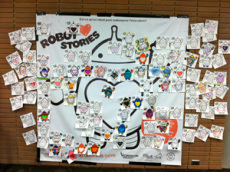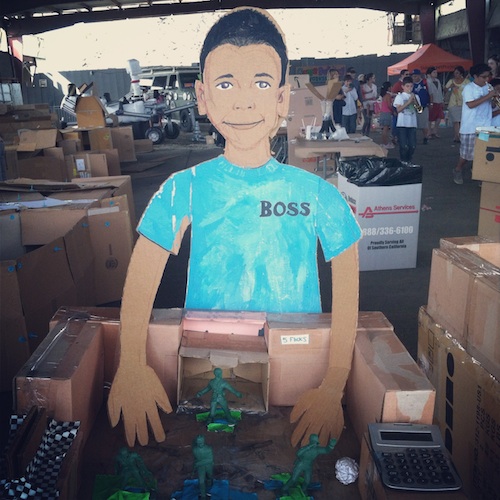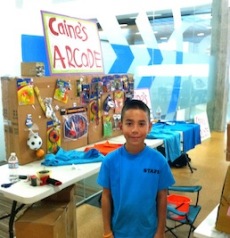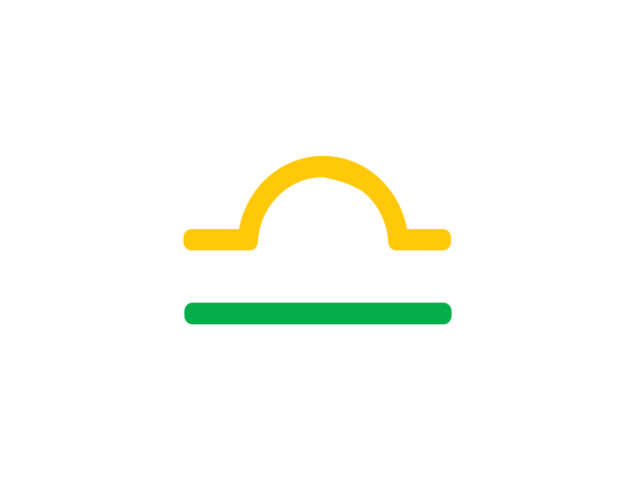 Two weeks ago, this blog featured a preview of Robot Heart Stories (R<3S), a 10-day transmedia learning project in which two classrooms in underserved neighborhoods in Montreal (French speaking) and Los Angeles (English speaking) used collaboration and creative problem solving to help a lost robot navigate across North America before hitching a ride back to space with NASA on a launch to the International Space Station, scheduled sometime early next year.
Two weeks ago, this blog featured a preview of Robot Heart Stories (R<3S), a 10-day transmedia learning project in which two classrooms in underserved neighborhoods in Montreal (French speaking) and Los Angeles (English speaking) used collaboration and creative problem solving to help a lost robot navigate across North America before hitching a ride back to space with NASA on a launch to the International Space Station, scheduled sometime early next year.
The robot (symbolized by a stuffed animal version embedded with a GPS chip, whom students in both classrooms decided to name Laika, after the first dog in space) ended the North American-leg of its journey (in picture and story form here) in Los Angeles on Friday, October 28 at the DIY Days conference held at UCLA. I had the pleasure of attending DIY Days (keynoted by my Ph.D. advisor Prof. Henry Jenkins) and meeting a diverse group of creative educators, game designers, filmmakers, and authors.
Many of people I met are deeply invested in new ways to approach the role of media in children’s learning ecologies. I believe that various projects presented at DIY Days (including R<3S and another very special project I’ll share in a later post) have deep implications for the role transmedia storytelling and immersive learning experiences can have in problematizing and improving education processes and outcomes in the U.S. and internationally.
 DIY Days (organized by Lance Weiler, also the creator of R<3S) is a free conference, taking place biannually in NYC and LA. The conference focuses on making ideas, resources and networking accessible to storytellers to enable them to fund, create, distribute and sustain their projects. DIY Days, along with this fall’s StoryWorld and the Futures of Entertainment Conferences, are touch points for members of a growing global network of transmedia storytellers, interested in how the power of narrative can impact commercial ventures, non-profit organizations, and issues such as education, health care, and human rights violations that require sustainable solutions.
DIY Days (organized by Lance Weiler, also the creator of R<3S) is a free conference, taking place biannually in NYC and LA. The conference focuses on making ideas, resources and networking accessible to storytellers to enable them to fund, create, distribute and sustain their projects. DIY Days, along with this fall’s StoryWorld and the Futures of Entertainment Conferences, are touch points for members of a growing global network of transmedia storytellers, interested in how the power of narrative can impact commercial ventures, non-profit organizations, and issues such as education, health care, and human rights violations that require sustainable solutions.
What exactly transmedia storytelling is has been explained and re-explained, but for the purposes of the context of transmedia storytelling in education, let’s set the parameters, as Jenkins does, as “the best approach to tell a particular story to a particular audience in a particular context depending on the particular resources available to particular producers.” A child can be the one telling the story, being told the story, or re-telling the story in a new way to a friend, sibling, or parent. The resources may be digital (e.g., an animation-rich smartphone app) or analog (e.g. an “animated” — as in, lively — puppet show).
I’d like to all-too-briefly highlight three discussions I engaged in at DIY Days related to transmedia storytelling, children, media, and education. Many thanks to Jamie Salka and Duke Doyle of Story Pirates, Janine Saunders of R<3S, and Prof. Liz Losh of UC San Diego for being great conversation partners regarding these ideas.
Do-it-Yourself (and Ourselves?)
DIY (as in Do-it-Yourself) is a pretty ambiguous category when it comes to talking about individual or collective forms of “doing it.” The DIY approach to engaging with culture is defined by amateurs being able to make their “own” media by using supplies, techniques, and skills that were previously exclusive to highly-trained experts who had access to then-expensive and restricted spaces, know-how, and resources.
Michele Knobel and Colin Lankshear have recently edited DIY Media: Creating, Sharing and Learning with New Technologies (2010), a rich book on DIY culture and what it might contribute to reframing contemporary educational practices and pedagogy. (See part one and part two of their recent interview with Jenkins on the book’s implications and core themes.) Though the event was called DIY Days, there was a lot more evidence in support of the value of DIO (Do-it-Ourselves) or (Do-it-Together). How we “do” education and what “it” is we value teaching cannot be separated from the social context in which it takes place.
Experiential Learning and Immersive Learning
Robot Heart Stories is the first in a trilogy of experiential learning projects (spanning air, land, and sea) from award winning storytelling pioneer Lance Weiler and creative producer Janine Saunders. “Experiential learning” is generally defined as formal or informal encounters through which learners are able to reflect, generalize, and apply skills and knowledge in active and directly applicable ways. One example might be instead of only reading about how magnets work in a book, a student might be able to supplement his or her learning with using a compass to solve a puzzle, and the use of that compass being a way of knowing magnets in a deeper way.
But, not to take anything away from R<3S, isn’t all learning, even sitting in uniform rows with eyes facing uniform pages in a book, an experience? And if teachers or facilitators place most of the emphasis on the experience of learning, is this at the sake of reflection on that engagement or its lasting social impact? Perhaps “immersive learning” might better acknowledge the different culturally-based experiences, conditions, and communication styles that learners bring to any educational activity.
Interactivity and Participation
Just because an eBook, virtual world or video game is interactive doesn’t make it particularly participatory. Who gets to authorize and make the choices about how open or closed ended a media text is? What is unique about R<3S is that participation in the project is not limited to its creators, teachers, or students. You can collaborate with the classroom by selecting one of the students’ stories, working with the photograph of Laika the Robot associated with that story, add a layer of your own illustration to that photo, and posting it here. You can also get involved by donating to the project here.
In conclusion, from conception to execution, R<3S is a rapid prototype. The project moved faster than any commercial or grant agency venture. Logistically, this DIY/DIO/DIT process can be messy and experimental, which also makes analyzing documentation and assessing outcomes tricky as well. The success of this project, as with other applications for transmedia storytelling in education, depends on the needs of all actors involved, the resources available to them, and the social context around the producers and audience of the story.
Photos:
Top: A wall of robot “heartpacks” (in both French and English) that powered Laika’s journey, posted at DIY Days
B&W: R<3S Creative Producer Janine Saunders, Meryl Alper, and Laika (the Robot) at DIY Days
Meryl Alper is a Ph.D. student in Communication at USC Annenberg. Prior to her graduate studies, she worked as a researcher for Sesame Workshop and Nick Jr. At Annenberg, her research focuses on young children’s evolving relationships with analog and digital technologies. She is particularly interested in intergenerational media use among children and families, media literacy in early childhood education, children’s psychological processing of interactive media, and representations of nationality in children’s television.




